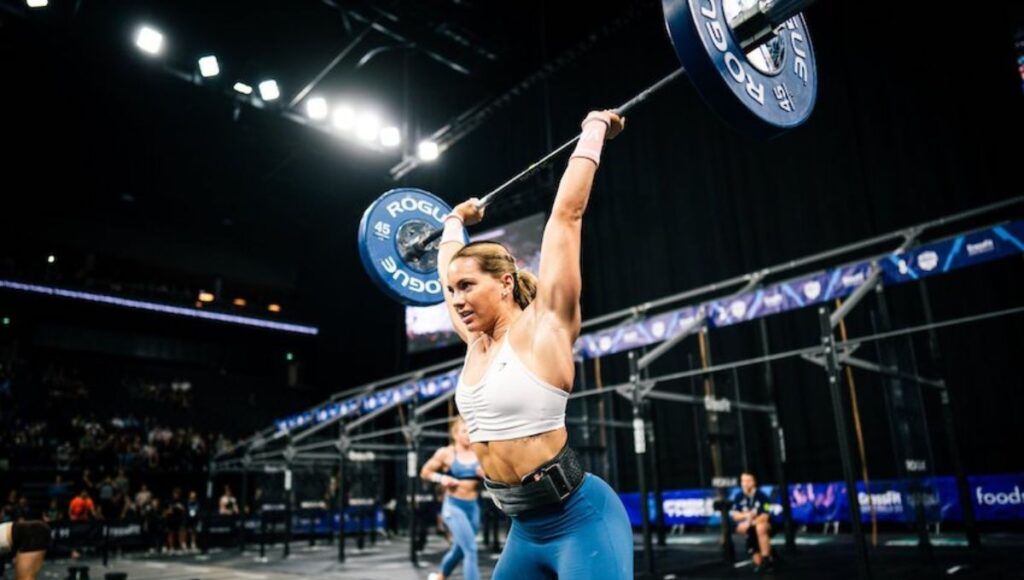Fitness
Why Push, Pull, Leg Split Workout is DEAD | BOXROX

So, you’re ready to get jacked. Maybe you’ve been hitting the gym regularly, but now you want to optimize your muscle growth. Good news: we’ve got some new science-backed insights that can help you tweak your training for better results. Let’s dive into what we know about training frequency, volume, and the best approach to maximize hypertrophy (aka muscle growth).
And when we decide to dive into the subject, we mean we lean into the expertise of Dr. Mike Israetel and Dr. Milo Wolf. They are the ones who began talking about why the push, pull, leg split workout is dead, why, and what you should be doing instead, according to scientific research.
Dr Milo Wolf shares his invaluable knowledge on a YouTube channel ranging from hypertrophy and strength training to losing fat, although the information for this article is based on a video he presents uploaded on the Stronger By Science YouTube channel.
Dr Mike Israetel, PhD in Sport Physiology and co-founder of Renaissance Periodization, is a well-respected professor in the bodybuilding community. He doesn’t only talk about workouts and fitness tips, he often dives deep into health and nutrition.
Without further ado, let’s get to it, shall we?
What is Muscle Hypertrophy?
In simple terms, hypertrophy is the process where your muscles grow larger. Every time you lift, you create tiny tears in your muscle fibers. Afterward, your body repairs those fibers, making them stronger and larger. It’s the core of how people bulk up, whether for aesthetics, strength, or general fitness. But there’s more to it than just lifting heavy weights. How you structure your workouts—specifically, your training frequency and volume—can have a big impact on your gains.
The Science Behind Training Frequency and Volume
- What is training frequency?
- What does volume mean in training terms?
- Latest research findings on the balance of frequency and volume
Let’s break this down: training frequency refers to how often you hit a muscle group each week, while volume is the total amount of work you do (think of sets and reps). The big question is: how should you split your training for optimal results?
“So if you’re only training a muscle once a week, you’re missing out on three or four days out of that week where you’re not growing,” Dr. Milo explains. Research backs this up: training a muscle group multiple times per week, with a moderate volume, leads to better muscle growth than cramming all your sets into one day.
Why Push, Pull, Leg Split Workout is DEAD
- Why more frequent training is slightly better
- How to spread your sets over the week
- The myth of “body part splits” (why it may not be ideal)
Many people still swear by the old-school body-part split, where you dedicate each day to one muscle group—chest on Monday, legs on Tuesday, etc. But new research suggests there’s a better way. Training a muscle group two to three times a week could give you a slight edge in hypertrophy.
Dr. Milo Wolf elaborates, “What we want to do is maximize that area under the curve of hypertrophy,” meaning that spreading your training over more days gives you more opportunities for growth. By training a muscle more frequently, you’re making sure it spends more time in the growth phase. This doesn’t mean you need to increase your overall volume—just spread it out more.
Volume Matters, but Don’t Overdo It
- The importance of avoiding too much volume per session
- Diminishing returns when you do too much in one workout
- How many sets are ideal?
We often hear, “more is better,” but when it comes to volume in your workouts, this isn’t always true. If you’re doing too many sets in one session, you might actually be holding yourself back. “Per session volume and hypertrophy display more strongly diminishing returns,” Dr. Wolf points out.
There’s a limit to how much muscle you can stimulate in one workout. After about 5-8 sets for a particular muscle group in a session, the additional work might not be as effective. That’s where spreading out your volume comes in handy—more frequent, smaller sessions keep your muscles in a better growth zone.
Training Frequency for Different Levels
- How beginners should approach frequency and volume
- What changes for intermediate and advanced lifters?
- Differences between untrained and trained individuals in frequency response
For beginners, training each muscle group at least twice per week is a good rule of thumb. The extra sessions help build muscle memory, improve form, and stimulate faster gains. As Dr. Wolf says, “You see slightly larger returns when you go from once to twice a week than after that.”
Related: 3 New Studies Challenge the Perfect Rest Period Between Sets to Get Stronger
For more experienced lifters, the benefits of training each muscle more often still hold, though the returns might be slightly smaller. If you’re an advanced lifter, you might want to experiment with even higher frequencies, depending on how your body responds. Just remember: more isn’t always better.
Why “Full Body Workouts” Aren’t Just for Beginners
- Benefits of full-body workouts for muscle growth
- Comparison to upper-lower splits or push-pull splits
- How fractional training can be beneficial
Many people assume that full-body workouts are only for beginners. But even if you’re advanced, incorporating full-body sessions can ensure you’re hitting each muscle group frequently enough. In fact, research shows that even indirect muscle activation—like your biceps during back exercises—can count toward your weekly frequency.
“If you modify it a little bit… you’re actually training them one and a half or two times a week,” says Dr. Wolf. This means that even indirect work, such as biceps getting involved when you’re working your back, contributes to their growth.

Applying This to Your Routine: A Simple Framework
- Full-body vs. split routines: which to choose?
- Example weekly plans for different training schedules (2, 3, 4, or 5 days per week)
- How to balance recovery with frequency
For those who can only train two to three days a week, a full-body routine will likely give you the best bang for your buck. It ensures that every muscle group gets hit at least twice. If you have more time to dedicate to training—say, 4-5 days per week—an upper-lower split could work well. This gives each muscle group enough attention while also allowing for adequate recovery.
Example Split for 3 Days Per Week
- Monday: Full Body (focus on big lifts)
- Wednesday: Full Body (lighter weights, focus on volume)
- Friday: Full Body (heavier sets, low volume)
Example for 5 Days Per Week
- Monday: Upper Body Push
- Tuesday: Lower Body Pull
- Thursday: Upper Body Pull
- Friday: Lower Body Push
- Saturday: Light Full Body (or accessory work)
Leg Workouts with Dumbbells: A Comprehensive Guide to Building Strength
The Final Takeaway: It’s About Balance
If there’s one thing to remember, it’s that hypertrophy isn’t just about going hard once a week. Small changes in frequency and how you spread your volume can make a big difference in the long run. The key is finding what works for your schedule and body.
As Dr. Milo Wolf puts it, “It’s an optimization thing, but it’s also a question of what exactly do you lose by just taking single-session training and spreading it out more?”
Conclusion
To wrap it up: training frequency and volume are critical factors in optimizing muscle growth. Aim to hit each muscle group at least twice a week, avoid cramming too many sets into one session, and spread your workouts over the week to keep your muscles in that sweet growth zone. Everyone’s body responds differently, so tweak things based on your progress, but remember—more frequent doesn’t mean more volume.
Stay consistent, adjust your training frequency as needed, and before you know it, you’ll be on your way to getting seriously jacked!
Was this article helpful?









